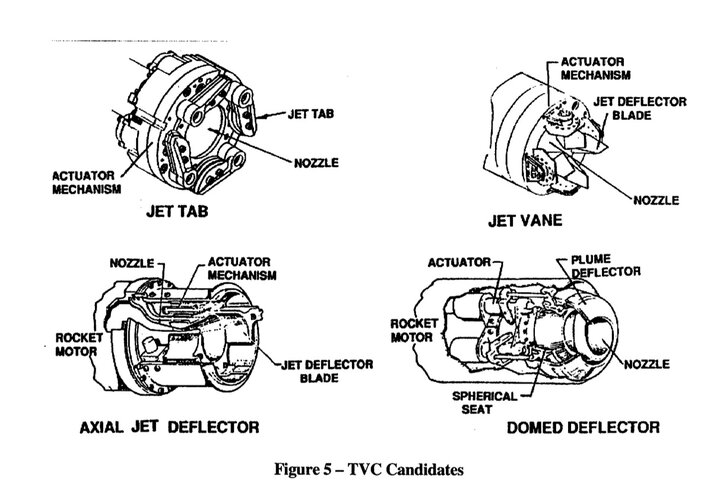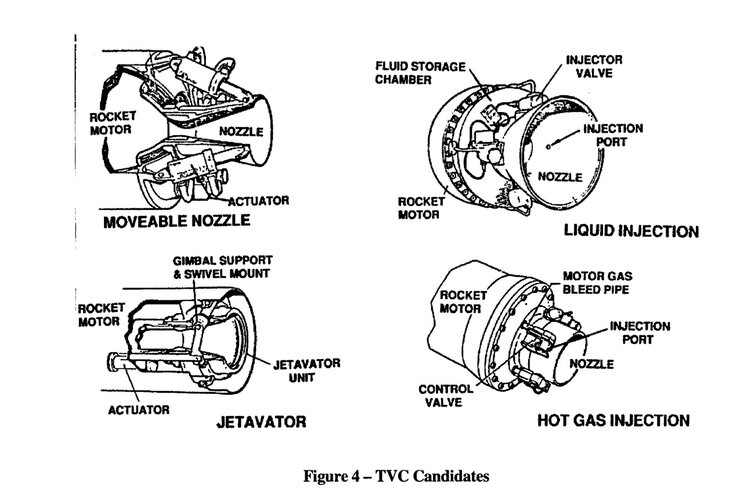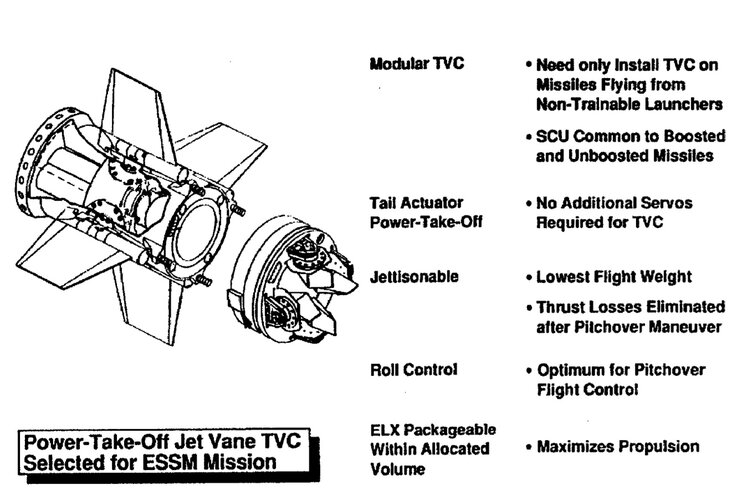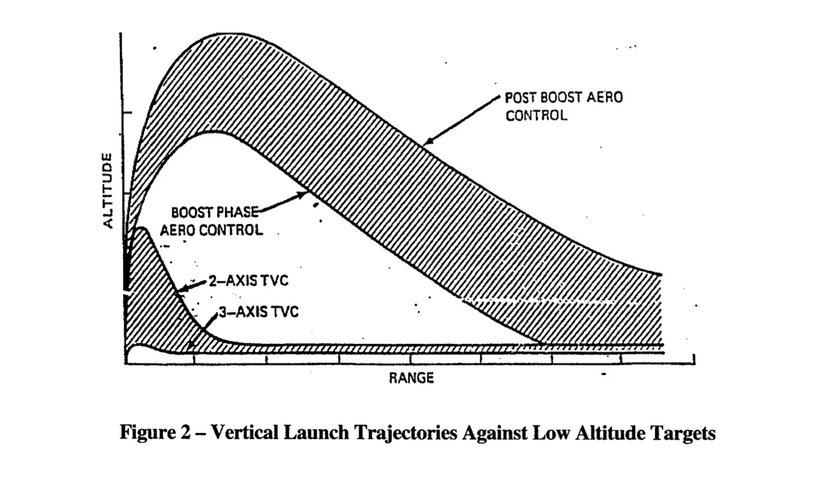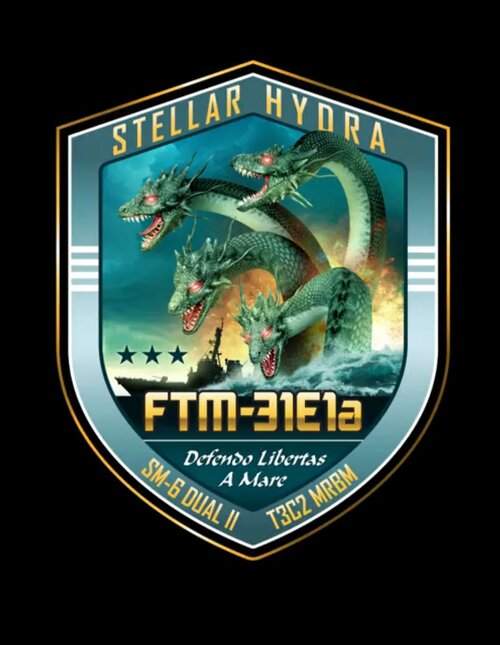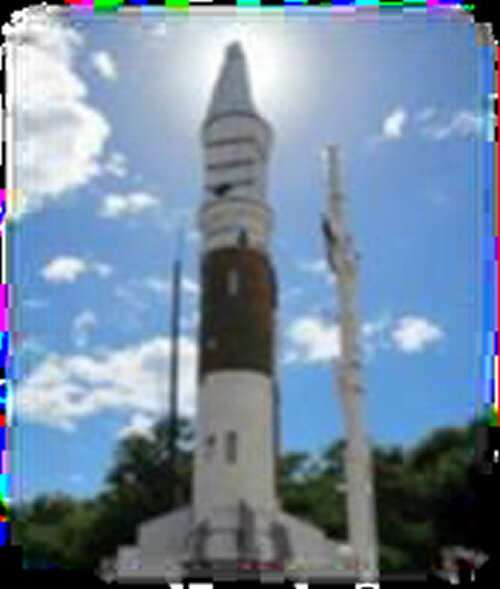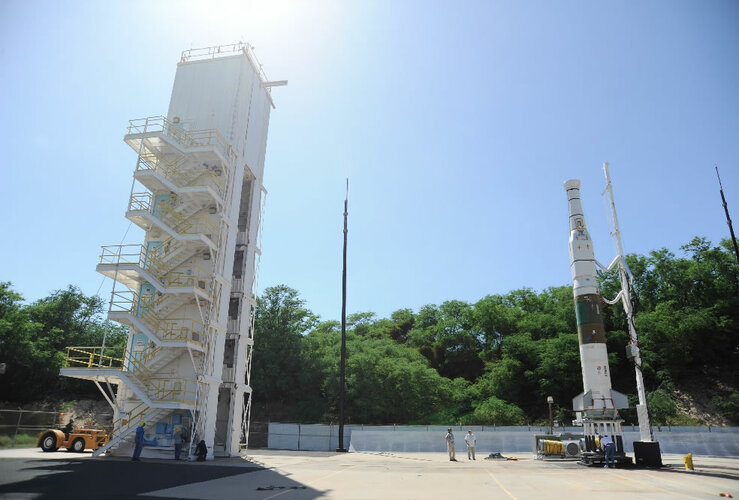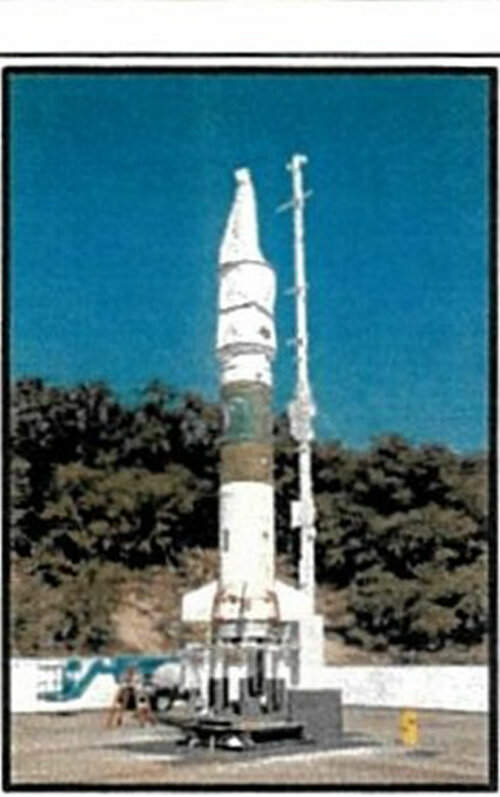You are using an out of date browser. It may not display this or other websites correctly.
You should upgrade or use an alternative browser.
You should upgrade or use an alternative browser.
US Navy Standard Missile Family
- Thread starter Lampshade111
- Start date
-
- Tags
- area air defence asat asuw ballistic missile defense cold war cold war ii convair early 21st century general dynamics general dynamics pomona division hughes missile systems company late 20th century north atlantic treaty organisation post-cold war raytheon standard missile company (smco) surface-to-air missile united states united states navy
Yes, go ahead.
I'll have a look tomorrow however I might not have time to scan them as I'm going away on a two-week holiday with my family (Mum, aunt, siblings and their offspring) to Omanu beach (Just south of Mt. Mauganui).
NASA
ACCESS: Confidential
- Joined
- 13 October 2020
- Messages
- 55
- Reaction score
- 138
It seems like the Navy is sticking with the jet-tab TVC system for the SM-2IIIC. As some here might recall, the Navy was exploring a TVC design that featured SSSL in 2015. It seems to have been quietly given up on in favor of the original jet-tab design as discussed on the first page of this thread. The source of the screenshot is the latest 2022 DOT&E report.
Attachments
As some here might recall, the Navy was exploring a TVC design that featured SSSL in 2015
SSSL?
- Joined
- 16 April 2008
- Messages
- 9,624
- Reaction score
- 14,556
As some here might recall, the Navy was exploring a TVC design that featured SSSL in 2015
SSSL?
Supersonic split-line.
- Joined
- 3 June 2011
- Messages
- 18,369
- Reaction score
- 12,323
This sounds more like what's used on ESSM in VLS systems, not something used to improve maneuverability.It seems like the Navy is sticking with the jet-tab TVC system for the SM-2IIIC. As some here might recall, the Navy was exploring a TVC design that featured SSSL in 2015. It seems to have been quietly given up on in favor of the original jet-tab design as discussed on the first page of this thread. The source of the screenshot is the latest 2022 DOT&E report.
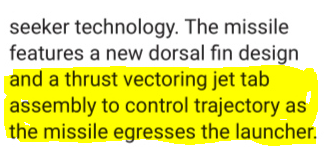
NASA
ACCESS: Confidential
- Joined
- 13 October 2020
- Messages
- 55
- Reaction score
- 138
Indeed, but ESSM used jet vane instead of a jet tab, USN researched several TVC mechanisms and down-selected three. Nonetheless, this still improves short-range performance.This sounds more like what's used on ESSM in VLS systems, not something used to improve maneuverability.It seems like the Navy is sticking with the jet-tab TVC system for the SM-2IIIC. As some here might recall, the Navy was exploring a TVC design that featured SSSL in 2015. It seems to have been quietly given up on in favor of the original jet-tab design as discussed on the first page of this thread. The source of the screenshot is the latest 2022 DOT&E report.
View attachment 692315
Attachments
Jet TAB for Standard? That seems like an odd choice.
Jet Tab would only be able to give pitch and yaw control whereas the jet-vanes (As used on the ESSM) would also give roll-control.
On another note does anyone have any performance figures for the Mk-72 booster such as its burn-time and thrust?
Are there available online any documents about the history and development of the Mk-72 booster introduced by the SM-2 Block-IV?
- Joined
- 3 June 2011
- Messages
- 18,369
- Reaction score
- 12,323
Could this be for the newer variant with the 21" missile body?About 2,600lb's...its a big boy...How heavy is SM-6 without booster though?
could air launched version reach hypersonic?
I'm not buying that number, at all.
The SM6 all-up weight is around 3,300 pounds (official USN number). Of that, the Mk 72 is around 1,500 pounds (see attached brochure), leaving 1,800 pounds for the main stage. That's just about plausible; the maximum weight of an SM2 MR Block IIIB is usually quoted around 1725 pounds [Correction: 1558 pounds]. I can't see any way to get to 2600 pounds without a radical stretch that clearly has not happened here.
Jet TAB for Standard? That seems like an odd choice.
Jet Tab would only be able to give pitch and yaw control whereas the jet-vanes (As used on the ESSM) would also give roll-control.
On another note does anyone have any performance figures for the Mk-72 booster such as its burn-time and thrust?
Are there available online any documents about the history and development of the Mk-72 booster introduced by the SM-2 Block-IV?
I saw a graphic once that indicated a burn out distance of 1800 feet. Not sure if there’s any truth in it.
- Joined
- 3 June 2011
- Messages
- 18,369
- Reaction score
- 12,323
Mk 72 BoosterJet TAB for Standard? That seems like an odd choice.
Jet Tab would only be able to give pitch and yaw control whereas the jet-vanes (As used on the ESSM) would also give roll-control.
On another note does anyone have any performance figures for the Mk-72 booster such as its burn-time and thrust?
Are there available online any documents about the history and development of the Mk-72 booster introduced by the SM-2 Block-IV?
Manufacturer: Aerojet
Diameter: 0.53m
Length: 1.70m
Volume: 0.374 m3
Loaded Mass: 712 kg
Propellant Mass: 468 kg
Empty Mass: 244 kg
Propellant Type: HTPB-AP
Propellant ISP: 260 to 265 seconds
Burn Length: 6 seconds
Notes: A significantly shorter booster developed to enable SM-2ER to be fired from AEGIS VLS.
From the Alternate Wars website. Not sure where he got the information but he's a member here. (Ryan C.)
Snip.
Thanks
Would the thrust of the Mk-72 be about the same as the previous Mk-70 booster?
- Joined
- 3 June 2011
- Messages
- 18,369
- Reaction score
- 12,323
Mk 70 Booster (aka EX-70)Snip.
Thanks.
Would the thrust of the Mk-72 be about the same as the previous Mk-70 booster?
Manufacturer: Thiokol
Diameter: 0.46 meters
Length: 3.93 meters
Volume: 0.652 m3
Loaded Mass: 973 kg
Propellant Mass: 682 kg
Empty Mass: 291 kg
Propellant Type: HTPB-AP
Propellant ISP: 260 to 265 seconds
Mk 72 Booster
Manufacturer: Aerojet
Diameter: 0.53m
Length: 1.70m
Volume: 0.374 m3
Loaded Mass: 712 kg
Propellant Mass: 468 kg
Empty Mass: 244 kg
Propellant Type: HTPB-AP
Propellant ISP: 260 to 265 seconds
Burn Length: 6 seconds
Notes: A significantly shorter booster developed to enable SM-2ER to be fired from AEGIS VLS.
The Mk70 is burning about 50% more fuel in roughly the same amount of time so I'd say no.
I've just been doing some google searching on the Mk-72's thrust and I found this paper, Parameter Estimation and Analysis of Standard-2 Missile, which if accurate states that the thrust of the Mk-72 is 174KN or 39,150Lbf.
- Joined
- 3 June 2011
- Messages
- 18,369
- Reaction score
- 12,323
From the figures I posted above it would give about 44,700lb of thrust at the low end. The ISP your source gives for the booster is quite low (224 ISP).I've just been doing some google searching on the Mk-72's thrust and I found this paper, Parameter Estimation and Analysis of Standard-2 Missile, which if accurate states that the thrust of the Mk-72 is 174KN or 39,150Lbf.
Last edited:
That's a good point.From the figures I posted above it would give about 44,700lb of thrust at the low end.
Good point, however I'd say that the scientist writing that paper were using estimates based on publicly available data which appears to be rather sparse.The ISP your source gives for the booster is quite low (224 ISP).
Edited to add: Thinking about those Isp figures the Chinese researchers used in their paper may be typical of equivalent solid rocket-motors used by the PLA.
Last edited:
SBT increment 2Would Dual II use the new 21” body?MDA with Navy July 24 tested SM-6 Dual II, fired four from Burke destroyer Ralph Johnson off Hawaii, presuming to test if effective in defending a carrier against the Chinese anti-carrier ballistic missiles DF-21 and 26
" one target was successfully intercepted. At this time, we cannot confirm the second target was destroyed"
Anyone know the difference between the SM-6 Dual I and Dual II?
From <https://www.mda.mil/news/21news0012.html>
No, the 21-inch version is SM-6 Block 1B. SM-6 Dual II seems to be a simple upgrade of the Dual I version, which enabled both air and missile defense in a single missile.
see my twitter这里有一张有趣的图表,显示了美国海军库存中各种主要舰载导弹的潜在目标。
对我来说,这里出乎意料的启示是,带有 21 英寸推进堆栈的新版本 SM-6 Block 1B 被显示为严格的 ASuW 武器。也许只是教义问题?(SM-6 Blk IA 将在 AAW 角色中做所有必要的事情)
编辑:看来我欠这个 PowerPoint 操作员一个道歉:https://www.secretprojects.co.uk/threads/standard-missile-projects.7671/page-4#post-343886
(较小的启示是,他们不认为 RAM 或 ESSM 具有 ASuW 能力,尽管 HAS 自 1990 年代末以来就已经存在。也可能是一种理论而非技术选择。)
View attachment 673305
View: https://twitter.com/W_ChiefGunner/status/1238400744786505729
bring_it_on
I really should change my personal text
- Joined
- 4 July 2013
- Messages
- 3,685
- Reaction score
- 3,896
Presumably these are pre-production/LRIP rounds. I wouldn't have thought IB would be twice as expensive as IA when the main change is a larger rocket.
We also know that it has a newer warhead and probably other changes that have not been publicly disclosed.
I had thought that SM-6 Ib used the necked down to the same front end as SM-Ia?Presumably these are pre-production/LRIP rounds. I wouldn't have thought IB would be twice as expensive as IA when the main change is a larger rocket.
We also know that it has a newer warhead and probably other changes that have not been publicly disclosed.
I had thought that SM-6 Ib used the necked down to the same front end as SM-Ia?
SM-!a? Do you mean SM-6 Block IA?
Yes. I thought the IB uses the existing warhead and guidance of the IA, just with a 21” motor.I had thought that SM-6 Ib used the necked down to the same front end as SM-Ia?
SM-!a? Do you mean SM-6 Block IA?
aonestudio
I really should change my personal text
- Joined
- 11 March 2018
- Messages
- 2,967
- Reaction score
- 7,507
MDA Test Successfully Intercepts Ballistic Missile Target
PACIFIC OCEAN - The U.S. Missile Defense Agency, in cooperation with the U.S. Navy, successfully conducted Flight Test Aegis Weapon System 31 Event 1a (FTM-31 E1a).
www.cpf.navy.mil
A Standard Missile-6 (SM-6) Dual II with Software Upgrade (SWUP) is launched from the USS Daniel Inouye (DDG 118) off the coast of the Pacific Missile Range Facility in Kauai, Hawaii as part of Flight Test Aegis Weapon System 31 Event 1a (FTM-31 E1a), March 30, 2023. The Missile Defense Agency, in cooperation with the U. S. Navy, held the successful missile defense event that demonstrated the capability of a ballistic missile defense (BMD)-configured Aegis ship to detect, track, engage, and intercept a medium range ballistic missile target in the terminal phase of flight utilizing the SM-6 Dual II SWUP in a single salvo of two interceptors.
seruriermarshal
ACCESS: Top Secret
- Joined
- 4 May 2008
- Messages
- 1,180
- Reaction score
- 574
strange , I think FTM-31 E1a include 4 SM-6 attack 2 targets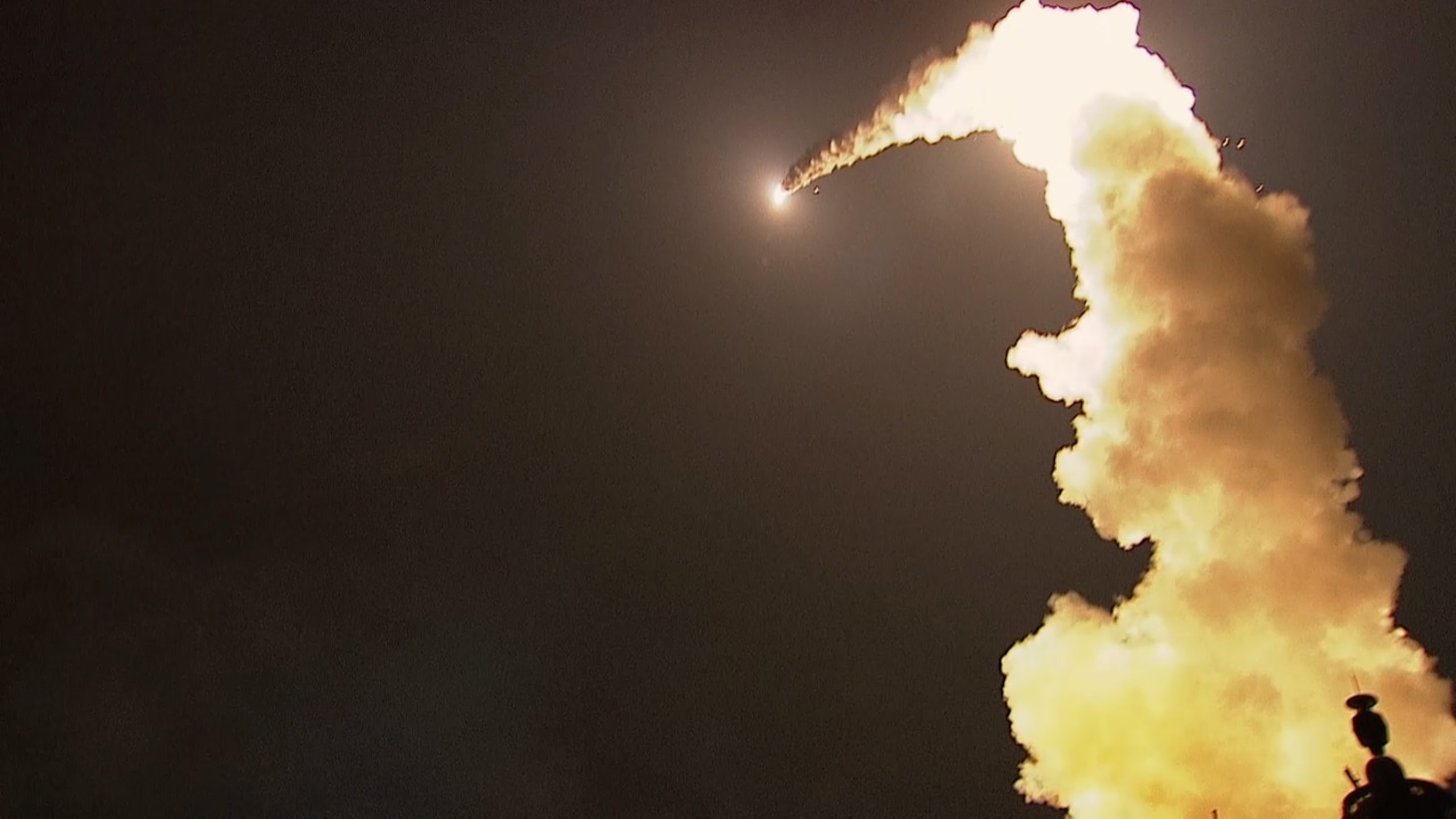
MDA Test Successfully Intercepts Ballistic Missile Target
PACIFIC OCEAN - The U.S. Missile Defense Agency, in cooperation with the U.S. Navy, successfully conducted Flight Test Aegis Weapon System 31 Event 1a (FTM-31 E1a).www.cpf.navy.milA Standard Missile-6 (SM-6) Dual II with Software Upgrade (SWUP) is launched from the USS Daniel Inouye (DDG 118) off the coast of the Pacific Missile Range Facility in Kauai, Hawaii as part of Flight Test Aegis Weapon System 31 Event 1a (FTM-31 E1a), March 30, 2023. The Missile Defense Agency, in cooperation with the U. S. Navy, held the successful missile defense event that demonstrated the capability of a ballistic missile defense (BMD)-configured Aegis ship to detect, track, engage, and intercept a medium range ballistic missile target in the terminal phase of flight utilizing the SM-6 Dual II SWUP in a single salvo of two interceptors.
- Joined
- 16 April 2008
- Messages
- 9,624
- Reaction score
- 14,556
strange , I think FTM-31 E1a include 4 SM-6 attack 2 targets
That was FTM-33.
seruriermarshal
ACCESS: Top Secret
- Joined
- 4 May 2008
- Messages
- 1,180
- Reaction score
- 574
The patch of FTM-31 E1a ( stellar hydra ) have 4 headsstrange , I think FTM-31 E1a include 4 SM-6 attack 2 targets
That was FTM-33.
Attachments
- Joined
- 3 June 2011
- Messages
- 18,369
- Reaction score
- 12,323
Says two and one target. Maybe 4 + 2 was too expensive.strange , I think FTM-31 E1a include 4 SM-6 attack 2 targets
MDA Test Successfully Intercepts Ballistic Missile Target
PACIFIC OCEAN - The U.S. Missile Defense Agency, in cooperation with the U.S. Navy, successfully conducted Flight Test Aegis Weapon System 31 Event 1a (FTM-31 E1a).www.cpf.navy.milA Standard Missile-6 (SM-6) Dual II with Software Upgrade (SWUP) is launched from the USS Daniel Inouye (DDG 118) off the coast of the Pacific Missile Range Facility in Kauai, Hawaii as part of Flight Test Aegis Weapon System 31 Event 1a (FTM-31 E1a), March 30, 2023. The Missile Defense Agency, in cooperation with the U. S. Navy, held the successful missile defense event that demonstrated the capability of a ballistic missile defense (BMD)-configured Aegis ship to detect, track, engage, and intercept a medium range ballistic missile target in the terminal phase of flight utilizing the SM-6 Dual II SWUP in a single salvo of two interceptors.
seruriermarshal
ACCESS: Top Secret
- Joined
- 4 May 2008
- Messages
- 1,180
- Reaction score
- 574
Yes , Only medium range ballistic missile target in press , but maybe another is a cruise missile target or Hypersonic traget . I hear T3C2 traget is interesting . seems like there are different RVs . one of they is a Hypersonic traget .Says two and one target. Maybe 4 + 2 was too expensive.strange , I think FTM-31 E1a include 4 SM-6 attack 2 targets
MDA Test Successfully Intercepts Ballistic Missile Target
PACIFIC OCEAN - The U.S. Missile Defense Agency, in cooperation with the U.S. Navy, successfully conducted Flight Test Aegis Weapon System 31 Event 1a (FTM-31 E1a).www.cpf.navy.milA Standard Missile-6 (SM-6) Dual II with Software Upgrade (SWUP) is launched from the USS Daniel Inouye (DDG 118) off the coast of the Pacific Missile Range Facility in Kauai, Hawaii as part of Flight Test Aegis Weapon System 31 Event 1a (FTM-31 E1a), March 30, 2023. The Missile Defense Agency, in cooperation with the U. S. Navy, held the successful missile defense event that demonstrated the capability of a ballistic missile defense (BMD)-configured Aegis ship to detect, track, engage, and intercept a medium range ballistic missile target in the terminal phase of flight utilizing the SM-6 Dual II SWUP in a single salvo of two interceptors.
Attachments
seruriermarshal
ACCESS: Top Secret
- Joined
- 4 May 2008
- Messages
- 1,180
- Reaction score
- 574
Forest Green
ACCESS: Above Top Secret
- Joined
- 11 June 2019
- Messages
- 9,579
- Reaction score
- 17,672
T3C2? No mind, I found answer:The patch of FTM-31 E1a ( stellar hydra ) have 4 heads
Type 3 Configuration 2.
https://www.mda.mil/global/documents/pdf/Moriarty,%20D.%20_(TC)TargetsCountermeasures%20Overview.pdf
T3 – Type 3 – Complex Target Configuration, often associated with one-of-a-kind specific target capability requirement
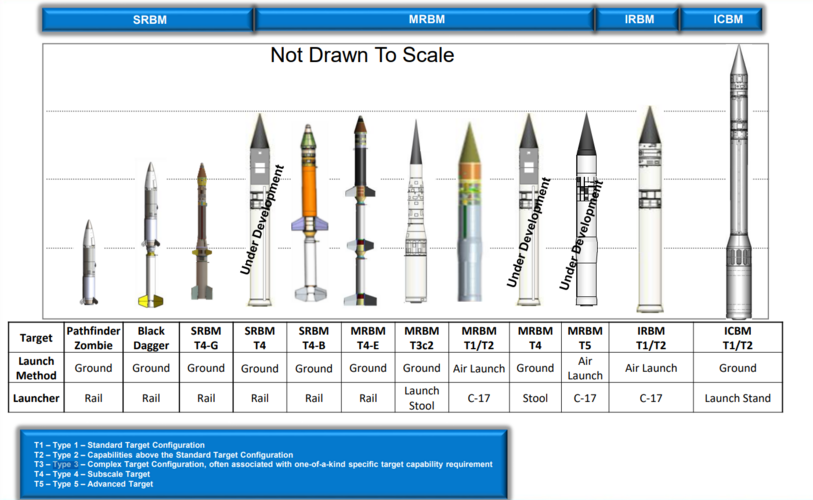
Last edited:
Similar threads
-
-
1980s US intercontinental cruise missile (& ATCM program)
- Started by GeorgeA
- Replies: 37
-
Sea-based Anti-Ballastic Missile Intercept System (SABMIS)
- Started by Triton
- Replies: 69
-
-
ORCA Missile System / Project Sunrise - Containerized Seafloor-based ICBM
- Started by Boxman
- Replies: 21


